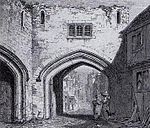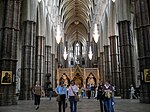Westminster Abbey Choir School
Westminster Abbey Choir School is a boarding preparatory school for boys in Westminster, London and the only remaining choir school in the United Kingdom which exclusively educates choristers (i.e. only choirboys attend the school). It is located in Dean's Yard, by Westminster Abbey. It educates about 30 boys, aged 8–13 who sing in the Choir of Westminster Abbey, which takes part in state and national occasions as well as singing evensong every day (except Wednesday) and gives concert performances worldwide. Recent tours include to America, Hungary and Moscow. Other tours have included Australia, America and Hong Kong. The school is one of only three choir schools that educate only the male trebles of the choir, the others being Saint Thomas Choir School in New York City and Escolania de Montserrat in Spain. The headmaster is Peter Roberts, former assessment co-ordinator of St George's School, Windsor Castle. The organist and master of the choristers is James O'Donnell, former Master of Music at Westminster Cathedral.
Excerpt from the Wikipedia article Westminster Abbey Choir School (License: CC BY-SA 3.0, Authors).Westminster Abbey Choir School
Dean's Yard, London Millbank
Geographical coordinates (GPS) Address External links Nearby Places Show on map
Geographical coordinates (GPS)
| Latitude | Longitude |
|---|---|
| N 51.49864 ° | E -0.12934 ° |
Address
Westminster Abbey Choir School
Dean's Yard
SW1P 3NY London, Millbank
England, United Kingdom
Open on Google Maps








